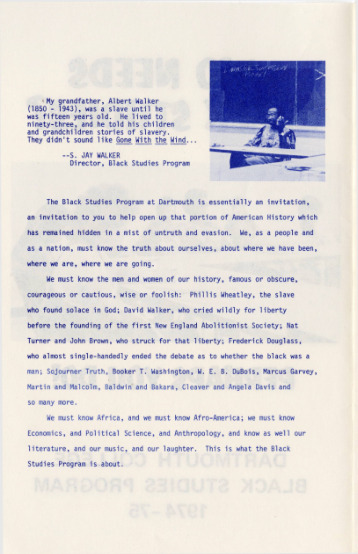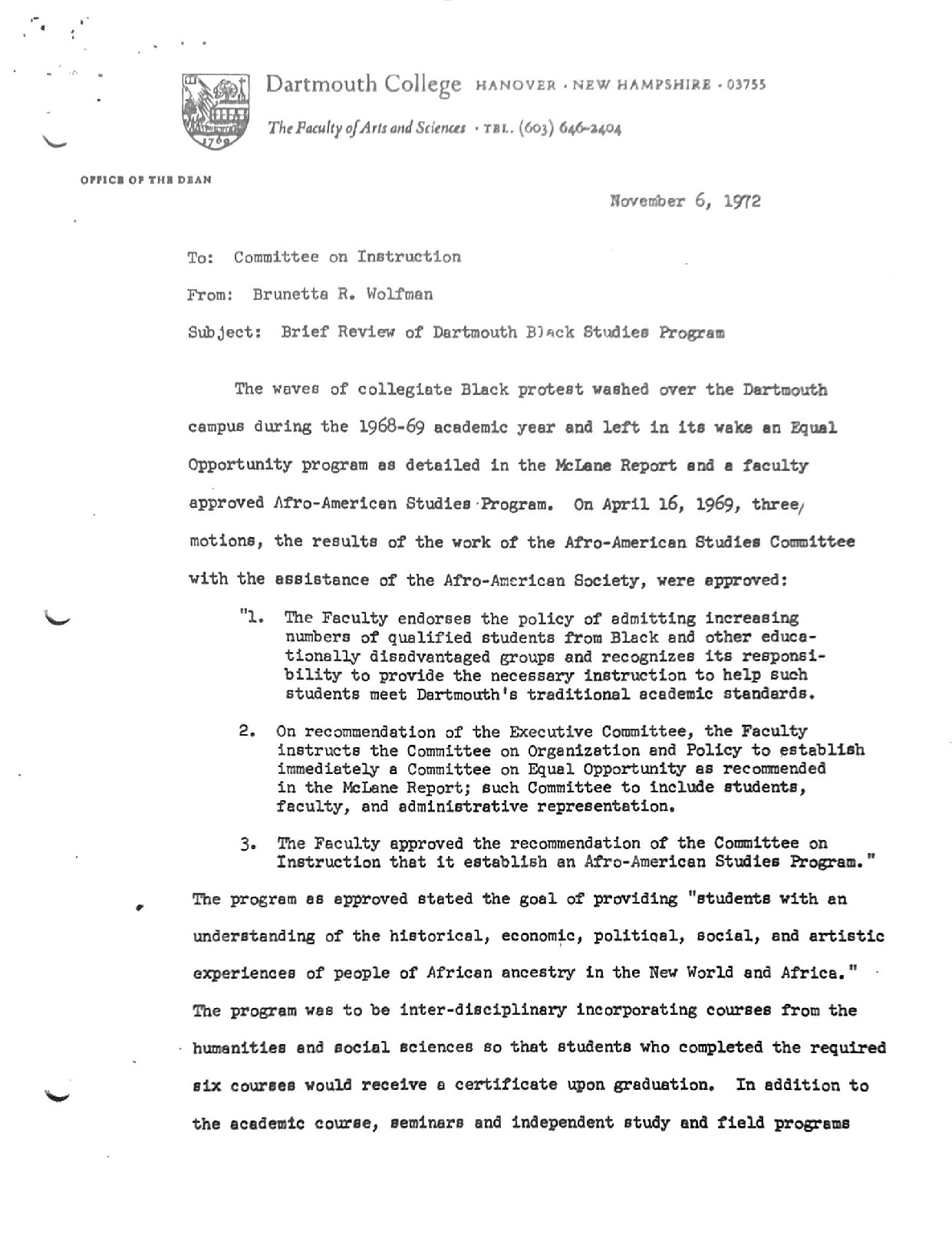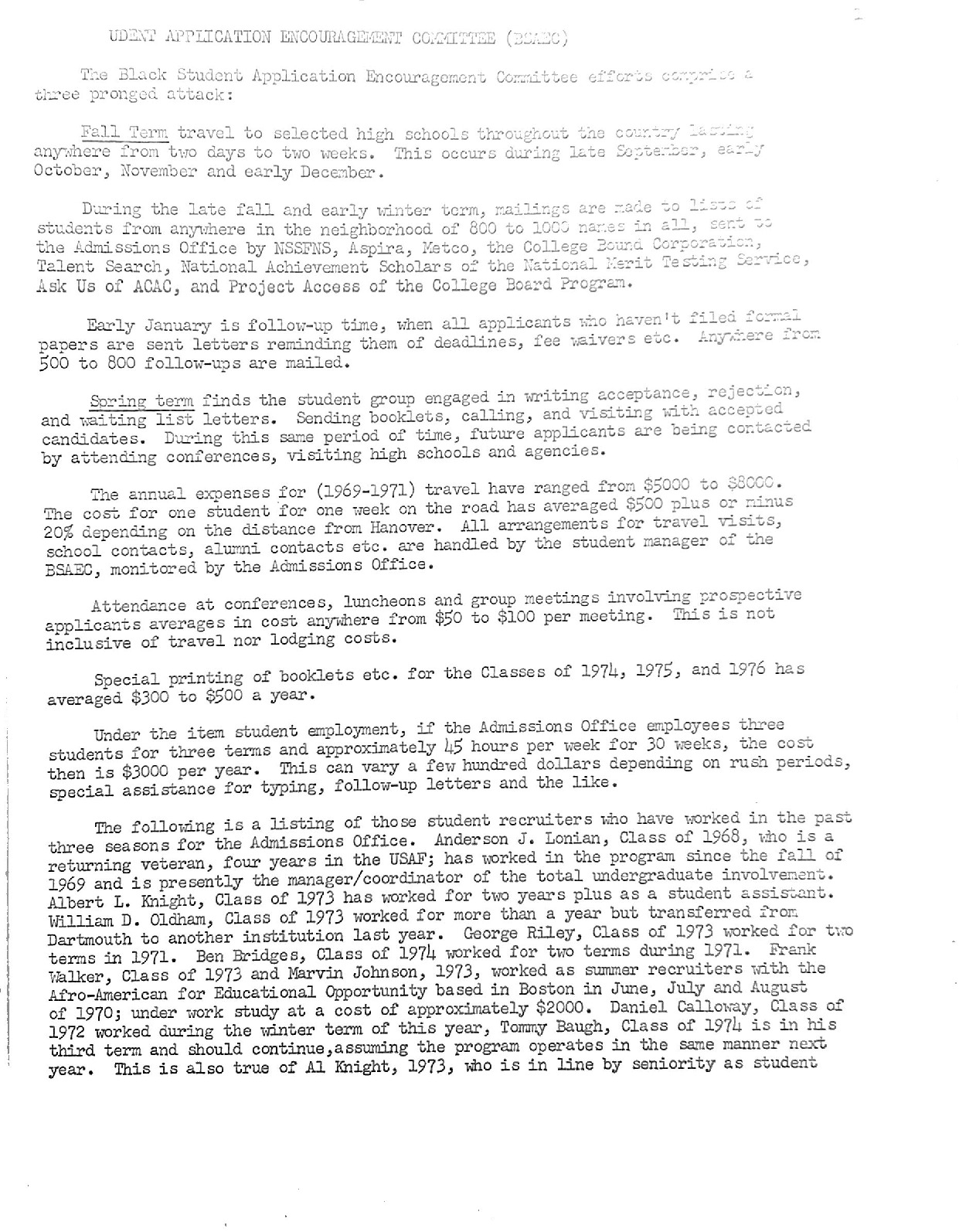Conceding to Students Demands
Student protests nationwide advanced two main student demands. The first was to admit more Black students and the second was to create Black Studies programs. College presidents heard and responded to these demands to various degrees.
The Campus Color line by Eddie Cole, describes how Black college presidents negotiated several pressures in order to help maintain control of their institutions and balance student demands. Not all students' demands could be met due to systems in place supporting institutionalized racism. In contrast, white college presidents, who had more funding opportunities, mainly faced financial pressures to concede to student demands. For example, in 1961 when addressing Georgia Tech students, then president Edwin Harrison informed students that the $690,000 grant from the Ford Foundation to support doctoral programs could be receded if the “institution mishandled desegregation."
In his book Upending The Ivy Tower, Dr. Stefan Bradley notes that "between 1945 and 1975, Dartmouth avoided much of the era's tumult and turmoil by both acceding to the demands of its Black Students and taking proactive steps towards improving race relations on and off campus." New Hampshire provided an environment such that Dartmouth could watch the racial protests occurring at its peers' institutions without fearing that the same level of chaos would arise in Dartmouth.
Thibodeaux described the Dartmouth Environment as "insular," shielding students from "real world" problems. Much of the Civil Right Movement seemed to be a distance away from Dartmouth College. Although the assassination of Martin Luther King, Jr. was not outrightly ignored by Dartmouth college, for some African Americans it seemed like their white peers did not find the event significant. For Thibodeaux, this raised the questions of
“How do we celebrate his legacy on campus within the next few days? How do we move forward in explaining to white classmates what this means to America and what this means to me personally?”
Thibodeaux '71
At Dartmouth, the sharp jump in Black college enrollment was due to the Black Student Encouragement Committee through the Afro-American society. In his interview, Thibodeaux explains that
“We [Black Students] convinced the school administration that, hey why won’t you send us on the road to recruit other black students in various parts of the country? Why won’t you send us to college campuses in the South, to Tugaloo, to Tuskegee, to Xavier to Dillard to recruit particularly black women to come on campus? Why? Because we thought that they should have that same opportunity we were having.”
Thibodeaux '71
Similarly, Tony Coats from the Stanford Black Alumni Stories, speaks about the Black Recruitment and Orientation Committee which helped her assimilate to Stanford. Black students' recruitment efforts increased the number of Black students admitted to predominantly white colleges.
In Fighting for Our Place in the Sun, Richard Benson writes “university recruitment programs began to actively seek out and recruit Black students to provide educational opportunities for those socioeconomically disadvantaged." Dr. Bradley states that Dartmouth College looked for promising students from poorer neighborhoods and less prestigious public schools. Martha Biondi in her book Black Revolution on Campus, mentions that Black students’ “efforts pushed colleges to formalize and expand affirmative action policies and provide greater financial aid, leading to a sharp jump in Black college enrollment in the 1970s.”
When asked why he chose Dartmouth, Thibodeaux's response seemed simple:
"One, it was the money. I had a full ride, a full scholarship along with a small loan and a work-study offer, and it was an Ivy League school."
Thibodeaux '71
That statement from our October 2021 interview is similar to what many Stanford Black alumni state when asked why they chose Stanford during their Black Alumni stories interview. The name, prestige, and financial opportunities played a significant role in attracting black students - old and new.
In 1975 at Dartmouth, Dr. Bradely stated that Black students made an "internal push at the college. The plan included hiring black admissions officers and making use of the Black Alumni Association. After implementing the strategy, the overall enrollment of black students shot up to 176."
As the number of Black students increased on college campuses, the need for Black Studies became prominent. Richard Benson explains that a major argument around the creation and implementation of Black Studies was for "an exposition of the facts of life in their totality, not just those statistics that reinforce white supremacy and racism." In his book From Black Power to Black Studies, Fabio Rojas explained that radical social movements evolved into Black Studies. At Dartmouth, Black Studies is known as African and African American Studies.
JUNELLE MATTHIAS: So, going back to education, how did Black Studies start, or like how did the creation of the African and African American Studies department impact your Dartmouth experience?
GENE THIBODEAUX: It made me want to do good, and it also taught me that in order to do good, you must do well. If you're suffering, and you cannot pay the rent, pay the mortgage, pay employees, you will not have the time nor the desire nor the ability or capacity to effect change. It taught me the value of history, taught me the value of my person, it taught me the value of my race.
The Black studies program served as an interactive curriculum that uplifted and educated all students, not just Black students. The push for more Black students and the creation of Black Studies programs allowed Black students to feel more welcome, learn their history, and increase their self-value.
As stated in the Report of the Visiting Committee to Evaluate the Black Studies Program at Dartmouth College, "Black studies came out of the demands of Black students." However, it was not seen as an educational reform. Thus, the program was evaluated in terms of what needed to be changed to create a diverse and impactful Black Studies program. In Wolfman's letter to the Committee on Instruction, he describes the conditions under which the Black Studies Program was created, and the three motions approved to enhance its standing in the following evaluation. A name change and an increase in courses offered were proposed. The number of courses offered in the Black Studies Program increased to eighteen in 1972 from the five courses first offered in 1969. The 1976 Black Studies Bulletin gave black students an update on the Black Studies program and encouraged students to meet with the Afro-American Society to discuss it. The document entitled "AAAS at Dartmouth: An Introduction" describes the requirements students must meet to receive a certificate in AAAS.
NOTE: To view full document, click on image, under site pages click on image, under media click on image. The document should open in a new tab.
Previous: Dartmouth Black Activism -- Next: Co-education at Dartmouth







